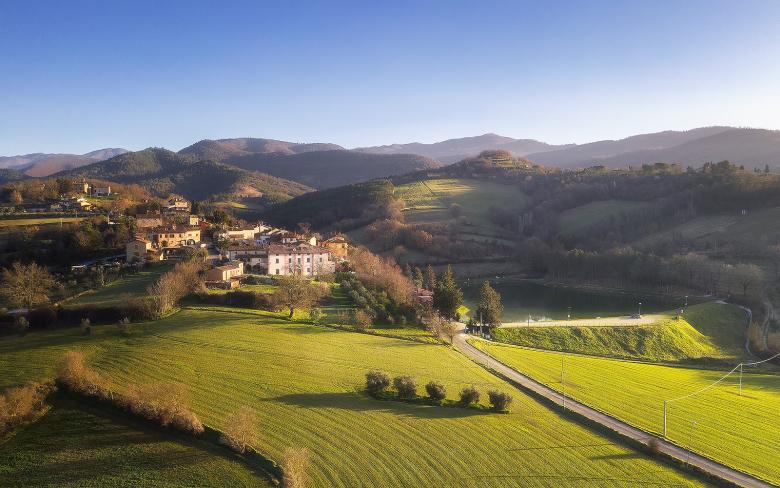Bufalini Castle - San Giustino
Bufalini Castle emerges in the town of San Giustino (Perugia) and is an admirable example of a stately historic home. Used as a museum after its acquisition by the state in 1988, it is surrounded by an elegant Italian garden with rare rose specimens. The structure began as a private fortress of a Ghibelline family of San Sepolcro and after the Battle of Anghiari (1440) became a military outpost of Città di Castello, soon destroyed by order of the Florentine Republic.
It passed into the ownership of Niccolò di Manno Bufalini in 1487, and reconstruction work was undertaken to the design of the Roman architect Mariano Savelli and on the instructions of Giovanni and Camillo Vitelli, men-at-arms and experts in military architecture. It took on the appearance of a fortress, with an irregular square plan and four towers at the corners, one of which was larger, the main tower; a large moat with water surrounded it.
The building's history is inextricably linked to that of the Bufalini family, which boasted established figures in ecclesiastical, literary and legal circles. Starting in the 1630s, the fortress was transformed into a noble residence responding to precise artistic, social and cultural needs, according to the wishes of Julius I and his brother, Abbot Ventura Bufalini.
Although it was the interior that underwent the most changes, with the creation of large rooms distributed around a courtyard with two porticoed sides, the insertion of the loggia in the facade and the monumental entrance in a central position date from that period.
From the outside, the original military structure of the building remained clearly visible. The design of the palace was the work of the Florentine architect of the Sangallo circle Giovanni di Alesso, known as Nanni Unghero, but the work was completed with the intervention of Vignola around 1560.



































